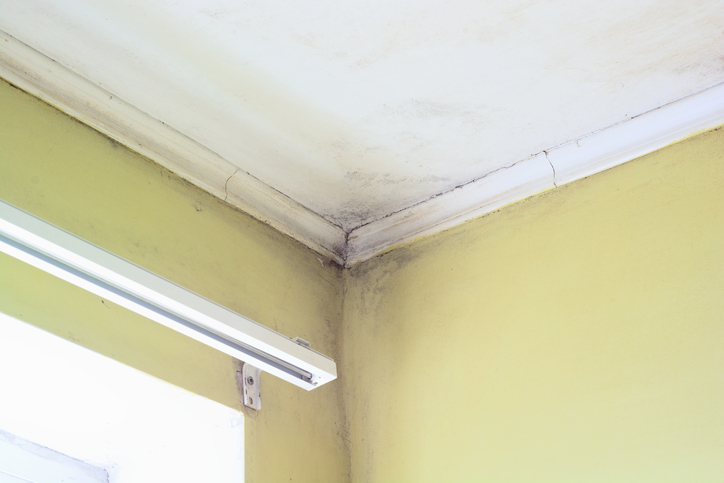After a flood or other serious water damage, concerns about mold might not be top on your list. Or, you may have a mold problem that is not immediately apparent. But with increasing evidence that some molds can have serious health effects, it is important to prevent mold growth and to remediate/clean up any existing indoor mold growth. Today we offer a dozen tips for preventing mold growth in your facility. Tomorrow we will look at ways to protect your workers from mold exposure in the workplace.
 |
Where Is Mold Coming From?
Mold requires moisture to grow. Some problems with mold are the result of airtight building construction and lack of adequate ventilation. Moisture problems at your facility could include:
- Roof leaks,
- Landscaping or gutters that direct water into or under the building,
- Unvented combustion appliances, and
- Delayed maintenance or insufficient maintenance.
Twelve Tips for Preventing Mold Growth
The key to mold control is moisture control. Preventive tips for reducing the risk of mold growth and exposure include:
1. Fix leaky plumbing and leaks in the building as soon as possible.
2. Watch for condensation and wet spots. Fix sources of moisture as soon as possible (within the 24-hour to 48-hour window).
3. Take steps to prevent moisture from condensation by increasing surface temperature or reducing the humidity in the air.
4. Maintain low indoor humidity, below 60 percent relative humidity (RH), ideally 30 percent to 50 percent RH, if possible.
5. Condensation can also be prevented by adding insulation to reduce the potential for condensation on cold surfaces (e.g., windows, piping, exterior walls, roof, floors).
6. Use insulation or storm windows. A storm window installed on the inside works better than one installed on the outside.
7. Maintain your heating, ventilation, and air conditioning (HVAC) system:
a. Contact your HVAC equipment supplier or manufacturer for recommended maintenance schedules and maintenance manuals.
b. Keep HVAC drip pans clean, flowing properly, and unobstructed.
c. Check HVAC filters regularly to ensure that they are seated properly. Replace HVAC filters on a routine schedule.
8. Vent moisture-generating appliances, such as dryers, to the outside.
9. Don’t let foundations stay wet. Provide drainage and slope the ground away from the foundation.
10. Pay special attention to carpet on concrete floors.
11. Do not install carpet in areas where there are perpetual moisture problems, e.g., drinking fountains, sinks, bathrooms, concrete floors with leaks or frequent condensation.
12. Promote groundwater drainage away from the building. Clear vegetation near the foundation and in the rain gutters.
Be Safe When Looking for Mold
If you suspect there is a mold problem at your facility, make sure that you follow these safety procedures in your initial investigation:
- Don’t touch mold with your bare hands, get it in your eyes, or breathe in mold spores.
- Take care not to cause mold or mold spores to be dispersed throughout the air where they can be inhaled by building occupants.
- Don’t run the HVAC system if you know or suspect that it is contaminated with mold.
- Be careful when checking behind vinyl wallpaper. Removal can cause a major release of spores.
Indoor mold exposure can be a problem in the workplace. Check tomorrow’s Advisor for some tips to protect your workers from mold exposure in the workplace.
